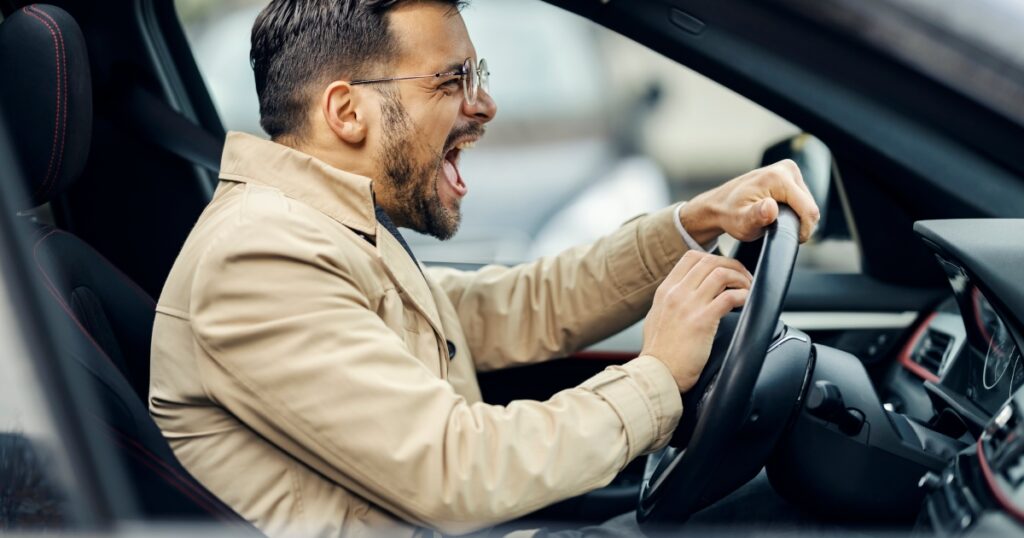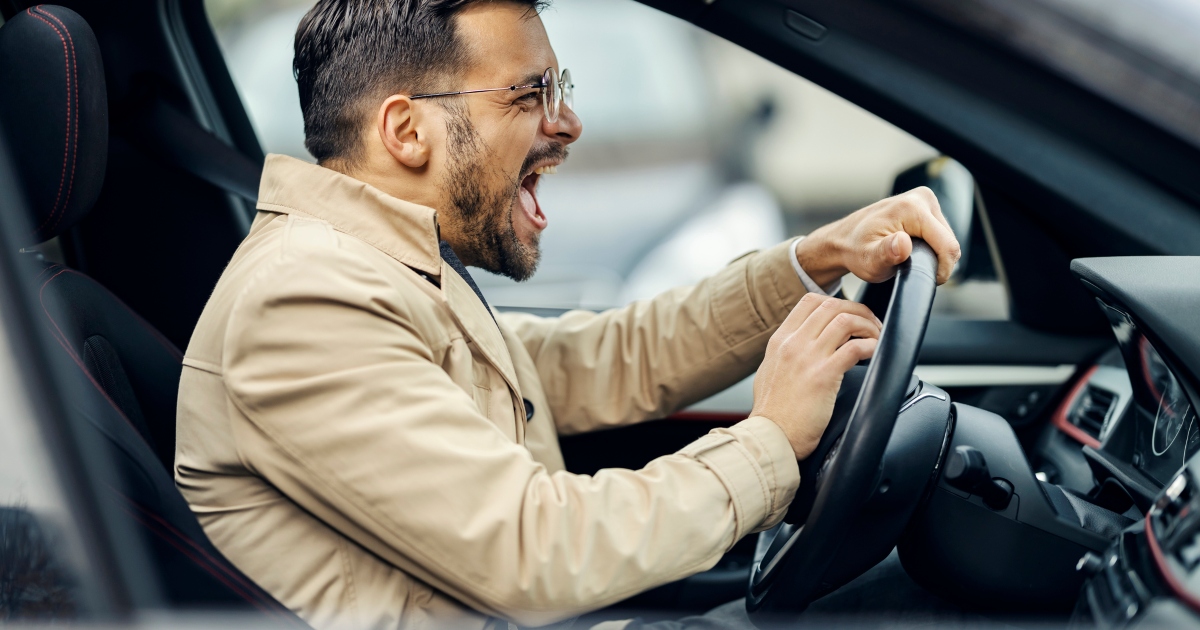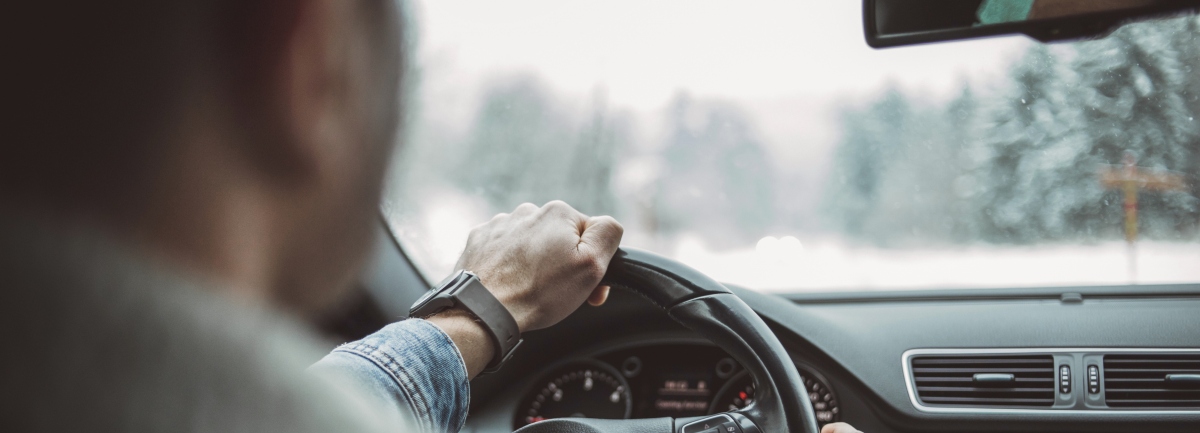Five Aggressive Driving Behaviors Most Likely to Cause a Car Accident in Cleveland

Aggressive driving behaviors are not just frustrating, they are intimidating and scary for many drivers. More importantly, these behaviors often result in crashes, causing victims to suffer life-altering injuries.
Table of Contents
At Friedman, Domiano and Smith, our Cleveland car accident attorneys have a long history of securing favorable outcomes for our clients. We understand what evidence you will need to prove negligence when aggressive driving results in a dangerous car crash.
Need legal help for you or a loved one? Call our trusted law firm today. We are deeply committed to holding at-fault parties accountable for their negligence and recovering the compensation you deserve!
Request your free case review today: 216-621-0070.
Running Red Lights
When drivers make a split-second decision to ignore traffic signals and run through red lights, it needlessly puts the well-being of others at risk. Other drivers, pedestrians and cyclists are all at risk of sustaining catastrophic damage.
The injuries sustained in a side-impact or T-bone collision, which are very common when drivers blow through red lights, can be especially devastating. Passengers are far more vulnerable to severe injuries because the side of a car is not as strong and offers less protection in a high-speed impact.
What makes this aggressive behavior especially dangerous is the element of surprise. Drivers traveling through a green light expect cross traffic to stop. When they do not, you have no time to take evasive action to maneuver your vehicle out of the way.
Boxing Other Cars In
Another type of aggressive behavior is when drivers purposely “box in” other vehicles. Drivers who engage in this behavior deliberately restrict the movements of another vehicle by positioning their car to block any potential escape routes. This practice, sometimes called “trapping” or “caging,” creates hazardous roadway situations and in severe cases, is considered a form of road rage.
Below are several common scenarios where drivers box others in:
- Multiple vehicles (intentionally or unintentionally) surround a car, preventing lane changes.
- A driver deliberately matches speed with vehicles in adjacent lanes to prevent another car from changing lanes or passing.
- Two or more drivers coordinate to trap a vehicle, sometimes slowing down to intimidate the boxed-in driver.
- A driver speeds up to close a gap when they see another driver attempting to merge or change lanes.
Boxing in other vehicles can occur naturally during normal traffic flow, such as in heavy congestion, around large trucks with limited visibility or in construction zones.
In some cases, aggressive drivers may become triggered to box in a vehicle if they think someone cut them off on purpose or angered them by honking loudly at them.
If you find yourself in this type of situation, it is important to stay calm. You should not engage with or provoke the driver. If you feel your safety is compromised, call 911.
Frequently Changing Lanes
Reckless driving behaviors, like rapid lane changes, are very common at busy intersections, where heavy traffic requires predictable driving patterns. If drivers suddenly weave through traffic, they force others to brake suddenly, disrupting the natural flow of traffic and creating hazardous conditions.
Drivers who frequently change lanes take even more significant risks during poor weather. Frequent lane changes on wet or icy roads can cause hydroplaning or skidding, leading to crashes like sideswipes and rear-end collisions.
Tailgating
Tailgating ranks among the most dangerous aggressive driving behaviors on Cleveland’s roads. When drivers follow too closely, they reduce the reaction time needed to avoid collisions when traffic suddenly slows or stops.
Most drivers tailgate during rush hour traffic in the morning or evening. However, to maintain safety on the road, drivers should maintain a safe following distance. The recommended time is at least three seconds behind the vehicle ahead.
This distance should be increased during inclement weather conditions, something Cleveland experiences frequently. This is especially true during the winter season when snow and ice create additional stopping hazards. Drivers should be particularly vigilant in high-traffic areas where sudden slowdowns are usual. If you are traveling around larger commercial vehicles, drivers should maintain awareness of larger vehicles that require greater stopping distances.
Speeding
Drivers may speed if they are running late to work or distracted by something, such as a phone call. Younger drivers could be immune to risks and could feel like “it will not happen to me.” If multiple teen passengers are in a vehicle, they may feel peer pressure to engage in reckless behaviors, such as racing or speeding. Some drivers may enjoy the thrill of speeding, a habitual behavior that can result in causing serious harm to others.
Drivers who speed have a reduced reaction time, leaving less margin for error. Navigating curves, intersections and unexpected obstacles at high speed can be deadly.
The faster a vehicle travels, the greater the impact is in a collision. High speed crashes result in far more catastrophic injuries. Fatality rates also increase when a driver is speeding, particularly for pedestrians and cyclists because they have no protection to absorb the impact.
Call Friedman, Domiano and Smith After a Car Crash
Roads become more dangerous when drivers tailgate, speed, weave through traffic, run red lights and drive aggressively. These reckless behaviors violate traffic laws and endanger innocent lives.
If an aggressive driver caused your car accident, seek legal help from our knowledgeable attorneys at Friedman, Domiano & Smith. We can help you pursue compensation for medical expenses, lost wages and more. Contact our trusted law firm today to discuss your situation and find out if you have a case. If we represent you, there are no upfront costs to pay for our legal services. We only get paid if we win compensation for you.
Friedman, Domiano & Smith. We get you results. 216-621-0070
Comments are now closed




Comments